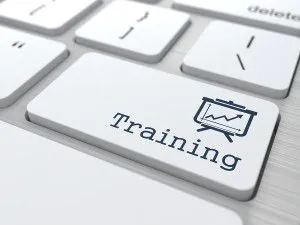Best Sales Training Techniques for Success

Effective sales training techniques vary based on how the information is being delivered and the type of goals that are trying to be achieved. The methods used for prospecting are distinct from what’s necessary to retain long-term clients or customers.
Regardless of the particular situation, sales training can be a crucial component when figuring out how to build a sales team that’s highly functional. The most effective sales training methods follow a holistic approach such as Janek’s own ATLAS framework, which involves these five steps:
- Analyze and Plan
- Tailor and Prepare
- Learn and Practice
- Assess and Report
- Sustain and Reinforce
Each step builds upon the other for a cumulative learning experience to ensure optimal sales performance from your team. The time, attention, and dedication devoted to each part of the training will impact the rate of success you’ll achieve both short- and long-term.
Analyze and Plan
Before deciding how you’re going to approach the sales training, you must figure out why your team requires training and what the desired outcome should look like. Often, organizations rely on sales training as a way to invest in the skills, knowledge, and ongoing development of their team members. More specifically, however, there are several other factors that may illustrate a need for sales training. These may include:
- A high turnover rate of sales team members
- Underperformance of KPIs
- Support for a new product rollout
- Organizational departments new to sales (i.e. customer service team tasked with identifying upsells or cross-sell opportunities)
- An influx of new sales professionals joining the group for the first time
For example, clear communication is essential from the day a sales team member is hired and onboarded. Each team member must be trained extensively on the product and/or service they’re selling and become familiar with the sales processes of the organization. There must be consistent messaging throughout and supporting documentation that complements learning.
On the other hand, if the reason you’re seeking training is due to your team underperforming, you want to be certain to know what the underlying issues are that you’re trying to mitigate with sales training. Whereas a lack of skill or knowledge can be overcome with the right set of sales training, poor attitude and motivation may require a different approach and solution.
One of the most critical steps during the planning phase is to identify and assess your team’s core selling skills. This requires an objective look at each sales team member’s strengths and weaknesses and to identify areas of improvement for the group as a whole.
Leverage data from your CRM and compare the leading and lagging indicators against previous quarters and performance. By using data, gaining personal insight from your team, and turning to third-party perspectives as a way to fully understand the current landscape, it’ll help you better tailor a plan designed specifically for your team. This makes the experience valuable and more rewarding than following a generalized overview of sales training techniques that may or may not apply to your situation.
Tailor and Prepare
The next step in the sales training plan is to use the analysis to build a training event that’s relevant and will resonate with your team. Elevating sales effectiveness begins with engaging with a basic sales training event that includes:
- Research-based program based on real field results
- Curriculum customization adapted to meet specific needs
- Use of gamification
- Clearly outlined program objectives
It also involves knowing which method of training delivery or self-paced learning application will prove most valuable, which requires consideration of:
- Class size
- Member location
- Training objective
- Training sustainment
Class Size
A class size that’s too large can limit the time and opportunity for the engagement necessary to apply to real-world situations. If you’re providing training to a large group, hold several smaller training events to allow for a smaller class size that facilitates more interaction and participation from the attendees. A sales training program works best whenever everyone has a chance to actively participate versus solely listening to the material being presented.
Member Location
Think about the best way to deliver the training – in-person, online, on-demand, or via a blended training delivery. This largely depends on the size of your team and how dispersed they are, as well as the ability to bring people together for training. Many organizations have a mix of sales team members who work remotely and in-office, which is another factor to consider when deciding which delivery method is most practical and applicable to your team.
Training Objective
The more relevant training is, the higher the likelihood of skill application in the real world post-training, thus improving performance. Make sure you establish a clear objective for the sales training program. Whether it’s to improve a certain KPI, prepare for a new product launch, or another initiative, make concentrating on the objective a key factor as you move forward.
Training Sustainment
One of the most important sales training techniques comes after the course or workshop is complete. Training sustainment is crucial in making noticeable improvements and implementing long-term solutions. Research shows 87 percent of new knowledge and skills are lost within 90 days when there’s no reinforcement. If you want to teach your team how to get better at sales, make the most of your sales training by investing in ways to sustain it, either through sales coaching or other self-guided resources, to keep important selling skills fresh and top of mind.
Learn and Practice
How the training is delivered should be an important consideration based on the objectives and goals you have defined. Options can include:
- Onsite instructor-led training
- Virtual instructor-led training
- Blended training (a combination of instructor-led and self-paced learning)
All delivery options should include a learning environment that leverages role-play activities, case studies, group ideation and discussion, and other interactive methods that allow participants to transfer their newly honed skills into a real-world environment. Everything you decide on during the plan and tailor phases will decide what type of delivery method will work best.
With the onset of the Coronavirus pandemic during Q1 of 2020, many organizations have turned towards virtual training options at a higher rate. When delivering training virtually consider shorter sessions spread out over the course of a few days as to not derail from daily productivity. Plus, it gives each sales rep the ability to immediately apply learned skills to their own unique situations.
Assess and Report
Once your team has completed training, it’s important to assess its effectiveness. This can be done through a variety of ways, including surveys deployed to the training attendees to provide them an opportunity of sharing unfiltered feedback; interviews with stakeholders and managers; group discussions; as well as comparing work output and performance pre- and post-training.
From there, it can be decided which areas have shown improvement and which areas may require additional training or coaching. This is also the time that the training sustainment and reinforcement phase kicks in, which brings us to our last point.
Sustain and Reinforce
Implementing a sustainment solution as part of your sales training initiative is a long-term strategy that is an essential part of a holistic training delivery and should not be disregarded. A comprehensive one-day training is valuable and highlights different sales training methods, but it is less effective on its own than when followed up with ongoing sales coaching, self-paced learning, or a combination of the two.
Research shows high-performing sales organizations are twice as likely to provide ongoing coaching as low-performing ones. Establishing a reinforcement model maximizes the return on investment of your initial sales training and leads to ongoing solutions for revenue growth, relationship building, and client retention. It also builds confidence and boosts performance to move past old behaviors and overcome new challenges.
No matter how proficient and experienced each sales rep is, there’s always room for improvement. Industries change, new technologies are introduced, and customers come and go. The best sales training techniques require adaptability and a genuine curiosity for learning to evolve and thrive over time. Sales training paired with effective sustainment strategies are what create winning outcomes for the long-term rather than settling for short-term applications alone. It requires constant time and effort from everyone involved to ensure maximum sales performance.
That’s why, at Janek, we’ve formed a team of experts to help sales teams adapt and redefine success. Get in touch with one of our sales coaches or strategists to see for yourself!
Sources:

- Account Planning (11)
- Awards (49)
- Client Testimonial (37)
- Personal Branding (19)
- Podcast (11)
- Research (70)
- Sales Career Development (87)
- Sales Coaching (156)
- Sales Consulting (137)
- Sales Culture (170)
- Sales Enablement (354)
- Sales Leadership (109)
- Sales Management (248)
- Sales Negotiation (16)
- Sales Prospecting (125)
- Sales Role-Playing (18)
- Sales Training (235)
- Selling Strategies (263)
- Soft Skills (70)
- Talent Management (94)
- Trusted Advisor (27)
- Virtual Selling (49)
- Webinar (9)


























